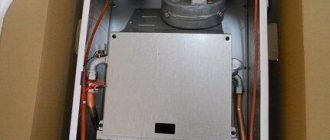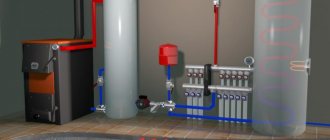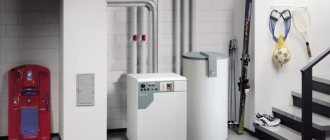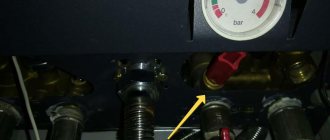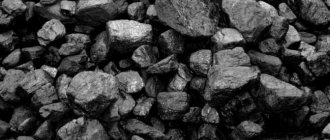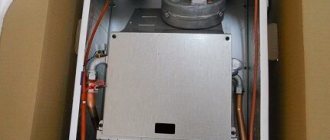Solving problems with boiler attenuation
If the flame goes out not due to malfunctions of the boiler itself, but to other external reasons, you can try to fix the problems yourself. Some models of simple boilers can even be cleaned from soot and soot yourself, but this is a topic for a separate article.
Restoring traction
You can figure out what is clogged - the boiler or the chimney - by disconnecting the corrugated pipe of the exhaust system from the boiler itself. If there is draft in the pipe, then we solve the problem with the boiler by calling a technician. Otherwise, you will have to climb on the roof and look into the pipe. If a blockage is detected, you need to remove those foreign fragments that interfere with the passage of smoke.
Cleaning the chimney is a mandatory procedure to prevent its contamination
If ice is found on the head, it must be carefully chipped off so as not to damage the chimney itself. Be sure to check the cleaning hatches. A sign that cleaning needs to be done is a large amount of soot and soot extracted from the inside of the channel.
You can still reconcile with the blowing of the channel due to strong wind if it happens once or twice during the entire heating season. But if winds are a common occurrence in your area, you should take measures:
- First, you can try to extend the pipe. The high altitude will prevent the wind from pushing the air back with force.
- Secondly, a competent configuration of the head can help out, which will cover the hole on the side from which the winds predominantly blow.
If the electricity goes out
A non-volatile boiler in conjunction with a circulation pump does not consume much. It can be adapted for DC power and switched to battery operation. But this is not suitable for powerful boilers. The only way out is to connect the boiler to an alternative source of electricity, for example, a gasoline or diesel generator.
If the gas pressure decreases
The first thing you need to do is check the gas pipeline at the place where it branches off from the main line. The joints where there are traces of welding, as well as valves and taps, are carefully checked. The specific odor imparted to natural gas at distribution stations will help detect leaks.
The only option is to write an appeal to the appropriate authorities. Contact your neighbors - they most likely have the same problem. Completing a collective petition will help speed up the decision-making process for the natural gas supplier organization in your area.
The reason for the extinguishing of a gas boiler: why it lights up and goes out, methods of elimination
Hello, dear visitors of the site ballony.com.ua. Whatever the reason for the extinguishing of the gas boiler, it must be eliminated correctly and promptly. It is also necessary to have information about possible repair operations.
If a gas boiler suddenly goes out during the cold season, this causes huge problems for the owners. And often you have to wait quite a long time for the master’s visit. Therefore, you can try to carry out independent repairs. But for this you need to know all the possible causes of the problem and methods for eliminating it.
Why does a gas boiler often go out?
If your parapet, floor or wall convector goes out quite often, you need to find out why this happens and what needs to be done to fix the problem. One of the main reasons for this phenomenon may be a lack of oxygen. This is especially true for boiler models that do not have a draft-increasing hood.
What else can contribute to a lack of air for the boiler:
- The chimney is clogged - in this case it needs to be cleaned;
- Installation of sealed plastic windows, significantly reducing the flow of fresh air into the room;
- Replacement of interior doors, as a result of which the gaps between the floor and the doors have become much smaller;
- Purchasing a powerful hood that takes part of the air flow for itself.
In addition to lack of air, the reason that the flame does not ignite may be a drop in gas pressure. The problem may be on the general backbone (in which case you just need to wait until specialists fix it) or specifically on your network.
To find out if this is true, you should treat all suspicious areas with a sponge and soap suds. Bubbles will appear where there is a leak. It is better to entrust the work of eliminating such a problem to professionals.
A few more reasons why the boiler may turn off:
- Malfunction of sensors - as a rule, these devices monitor the concentration of gases in the boiler and the temperature of the device. If a failure occurs, then naturally the operation of the unit will be disrupted and it will have to be turned off for repairs.
- Poor ventilation of the room - the boiler does not have enough fresh air. The easiest way to solve this problem is to open the door to the room or window. If a flame appears, then you need to think about installing additional ventilation so that the boiler does not constantly go out.
- Failure of the meter, which does not allow gas to pass through in the required quantity. This is usually expressed in the fact that the boiler is very loud, banging and thumping. The numbers on the display do not change smoothly, but in jerks. Here you need to call only specialists. Doing anything with the meter yourself is prohibited.
The reason for the boiler's extinguishing may be related to the pipe. If it burns out, you will have to change it. There is no other option.
Gas boiler does not light up
How to light a flame on a gas boiler
When you purchase and install gas equipment, the first question that arises is how to light a gas boiler. The first start-up of a gas boiler is carried out by a specialist, from whom you can get recommendations on the use of the equipment. During subsequent starts, you can also set the required temperature using the coolant heating level control knob.
Read more about the procedure for starting gas equipment in the material: Starting gas into a private house. Primary requirements
At the same time, the circulation pump is connected. Excessive noise indicates stagnant air in the pump. To release it, you need to remove the boiler cover, then unscrew the pump cover. When water appears from under the lid, screw it back on. As soon as the pump starts, automatic ignition occurs and the boiler operates normally.
The feed tap is of great importance for the operation of double-circuit boilers. Due to it, pressure is maintained so that the equipment operates without interruption.
If the gas boiler does not ignite the first time
In order to determine why the gas boiler does not turn on, you should pay attention to the following important points:
If your device's piezo element runs on batteries, try replacing them. As a rule, they last for 6-8 months, then a lack of power appears, which leads to the fact that the burner on the gas boiler does not light. The “syndrome” of low batteries sometimes manifests itself in such a way that the gas boiler does not light up the first time, but lights up on the second or third attempt. In modern gas boilers, batteries are practically not used to ignite the gas burner, and the problem when turning on can be of the same nature. Below we will look at the reasons.
Recommended reading: Why does a gas boiler often turn on and off?
What to do if a gas boiler with automatic ignition does not light up
Reason 1. Reduced network voltage
If the gas boiler does not start, then the problem may lie in the power supply from the household network. It is recommended to install a voltage stabilizer, which can significantly reduce the risk of consequences of power outages. It protects the electronic component of the boiler during power failures. A decrease in voltage may affect the operation of other elements of the gas heating system. First, check the serviceability of the outlet and inspect the condition of the electrical wiring.
Reason 2. The ignition unit has failed
When the equipment does not want to ignite, check how the ignition unit works. To do this, you can take a multimeter. Switch it to ohmmeter mode. Measure the resistance at the output of the contacts of the electronic unit, which are responsible for ignition. A level of 650-750 Ohms means that the unit is functioning normally. If the value is different, the tester will show an open (the electronics will show a value of 1) or a short circuit (the electronics will show a value of 0). Replacing the part will solve this problem.
Reason 3: Gas valve malfunction
Gas burners tend to let debris into the valve, as a result of which the valve fails because the inductor burns out. And she is responsible for the operation of the valve. To check this malfunction, you can also use an electronic tester in the “ohmmeter” mode. To do this, be sure to first turn off the power to the boiler. Readings of 80-90 Ohms can be considered normal. If the value is different, the gas valve must be cleaned. First you need to unscrew the side of the housing in which the valve is located and clean it inside. If the equipment has fasteners with a rarer head profile, you will have to select a suitable screwdriver or sharpen the one that is available.
Reason 4: Flame electrode needs cleaning
Another reason when the gas boiler does not turn on and there is no heating is contamination of the electrode. The soot remaining after fuel combustion causes the flame control electrode to malfunction. Cleaning with fine-grained sandpaper will help. If the gas boiler still does not turn on, you need to turn off the heating and wait until the circulation pump stops. Next, you need to turn off the instrument panel, remove the plug from the socket, and turn it 180 degrees. Then insert it into its original place and turn on the boiler. This rephasing helps restore the sensitivity of the gas ions necessary for normal operation of the system.
There is no spark and the flame does not light up on boilers with semi-automatic mode
The gas supply system is not adjusted
This problem on heating devices can lead to the following consequences:
- When fuel is supplied at low pressure, the system may experience constant malfunctions. The gas boiler may turn off, and the automation will not allow it to ignite when the coolant temperature drops and will generate an error. The consequences of low gas pressure, especially in winter, can be detrimental to the entire heating system. If the device generates this particular error, check the gas supply valve, as well as the fuel supply pipes at their connections for leaks. Call your gas company to see if they have reduced the pressure due to any work. If the cause cannot be determined, contact a specialist.
- gas pressure too high. This can lead to increased fuel consumption and rapid wear of all equipment. Check the gas supply valve, you can close it a little. However, first, contact the gas workers and find out if there were any failures on their part. accompanied by movement of the coolant along the system circuit. To resolve the issue, it is recommended to contact a specialist.
Read more: How to properly set up and adjust a heating boiler
The emergency electrical circuit is broken
The emergency electrical circuit includes connecting wires and bimetallic sensors in the chimney, which are triggered when 75-80 degrees Celsius are reached. The circuit also includes a thermocouple that produces a voltage of 10-20 mV, a draft breaker and an electric valve, which consists of an inductor, a rod and a valve.
If the emergency circuit is broken, the electric valve does not open, which may be the reason why the gas boiler does not ignite. A special multimeter tester will help you check all elements of the circuit. A value of 0.3-0.5 Ohm is considered normal. There should be no oxidized or loose contacts. If there is no such device, we adjust the temperature to about 0 and at the same time connect the piezoelectric element. The pilot light should light up. Release the temperature control button.
If it goes out, you need to carry out the entire cycle again, closing the contacts of the traction breaker in order to check the integrity of the installation and boiler sensors. If the pilot light is on, it is due to poor contact in the circuit or one of the sensors is not working. The thermocouple may also be faulty. Non-working elements require replacement.
The piezoelectric element has failed
This part is usually mounted next to the temperature setting, but is sometimes located separately. To check whether the piezoelectric element is working properly, try disconnecting the wire through which the generated voltage flows from the electrode and bring it 4-8 mm closer to the valve body.
After that, click on the launch element button. When a spark appears, the piezoelectric element is working, you need to check the electrode itself (its body is made of ceramics, it must be dry and clean). Remember that the fastening nut must be tightened by hand.
The valve or torch tube is clogged
This problem often occurs in the summer when the boiler is rarely used. In summer, the valve and flare tube become filled with insects, which prevent further gas movement. Also, the reason that the gas boiler does not turn on may lie in rust and the combustion products themselves. The tube and valve must be cleaned to continue proper operation of the equipment.
The flame does not ignite (general faults)
Pipe burnout
To organize the safe operation of the chimney, a steel pipe is used. However, it can overheat when interacting with combustion products and burn out. To avoid this problem, it is recommended to use a sandwich pipe, which will protect against overheated gases.
Chimney problems
There may be several problems associated with the chimney design. So, fallen leaves, snow can get into it, and the mouth can freeze over (in this case, the frequency of occurrence depends on the deflector, umbrella or other end). This requires cleaning the chimney or reshaping its fungus to allow smoke to escape unhindered. Below in the picture are options for “mushroom” deflectors.
In addition, if the chimney is poorly insulated, the gases in it can form an air lock, since the cooled, cold gas is more dense and does not allow hotter gases to escape freely.
If the chimney is not insulated, strong condensation may settle inside it and freeze up during the cold season. Insulating the chimney will help solve the problem.
If foreign objects (house, tree) interfere with the mouth of the chimney, you will need to increase its height, cut off interfering branches, or otherwise remove the obstacle to the exit of smoke.
Weak supply ventilation
Organizing normal supply ventilation is very important for the proper operation of gas equipment. So, combustion requires oxygen, and combustion of 1 m 3 of gas uses 10 m 3 of air. If this air is not enough, then backdraft may form in the chimney, and ventilation will not be enough. The exhaust hood in the kitchen also contributes to weak supply ventilation if the boiler is installed in this room. Also, due to plastic windows there may not be enough air. The problem needs to be solved by proper installation of gas equipment and proper ventilation.
The principle of operation of a gas burner
It consists of the following: air and fuel are mixed, and the combustion products must go through the entire combustion process. We can conditionally distinguish three tasks in the operation of this element of the system:
- preparing air and fuel for combustion by determining temperature, speed and direction;
- mixing these elements;
- combustion, that is, oxidation of combustible elements with the help of oxygen, combustion due to the nozzle at the end point of the tube.
The reasons that the burner does not light up must be sought in the principle of its operation.
The burner itself is essentially a metal tube that is hollow inside and has several holes called nozzles. The gas burns in it, heading towards the combustion chamber. The mixture of combustion products is discharged outside. And if the air is collected by natural injection, then the gas is distributed and directed inside thanks to the system of indicated holes.
If the gas boiler does not ignite, it means that the combustion conditions are not met: there is no gas, no air is supplied, and combustion products do not come out. Understanding the cause of problems allows you to eliminate them in a timely manner and restore system operation. When lighting a gas boiler, be careful. This equipment requires special care.
What devices use bimetal?
The scope of application of the bimetallic strip is extremely wide. Almost all devices where temperature control is necessary are equipped with bimetal-based thermostats. This is explained by the design simplicity and reliability of such relay systems. In our usual technology, thermostats are:
- In household heating appliances: stoves, ironing systems, boilers, electric kettles, etc.
- Heating systems: electric convectors, gas and solid fuel boilers with electronics.
- In electric packages there is automatic shutdown.
- In electronics in measuring instruments, as well as in pulse generators and time relays.
- In thermal engines.
In industrial technology, bimetallic plates are installed in thermal relays designed to protect powerful electrical devices from temperature overloads: transformers, electric motors, pumps, etc.
Heating boilers Conord
Rostovsky has a rich history and equally rich experience. Initially, the company was engaged in the repair of road equipment, but in the early 70s it was reoriented to the production of heating equipment.
At the same time, the name “Conord” appeared, which is an abbreviation for the words “Heating Boilers, Non-Standard Equipment, Rostov-on-Don.” The newly born plant began its activities with the production of the DON-16 boiler, famous throughout the USSR.
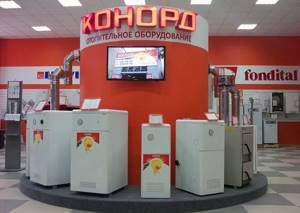
Heating equipment “Conord”
Today it is a modern enterprise, the technical equipment of which does not in any way remind of its advanced age. The production lines are equipped with the latest high-precision laser machines, imported presses and robots, which allow us to quickly and efficiently produce reliable and affordable devices. The main part of the range consists of gas water heaters, as well as heating boilers - gas, solid fuel and combined.
The range of boilers is quite diverse. First of all, the products differ in the gas burner device used (for short, they call it automatic). Three varieties are available.
Automation AGU-T-M (Russia)
- is cheap;
- does not require power supply (a bimetallic plate is used as a temperature sensor);
- does not impose special requirements on operating conditions and is inexpensive to repair (replacing the bimetallic plate - the only “weak link” - costs only 50 rubles).
This type of automation is quite common in our country and its use is not limited to the Conord brand. You can also see it in such Russian boilers as Mimax and some others.
There is no ignition system in the AGU-T-M, so the boiler has to be started using a lighter or a match.
Automation Euro SIT (Italy)

A boiler with such automation will be more expensive, but it simplifies setting the operating mode and ensures a higher level of safety. It contains:
- igniter with safety device (thermocouple);
- sectional burner with Polidoro tubes;
- gas valve SIT;
- temperature sensor;
- traction sensor
Unlike AGU-T-M, this automation reacts not only to gas shutdown, but also to deterioration of draft in the chimney.
The coolant temperature is set using a thermostat and is maintained automatically by a gas valve.
A piezoelectric spark gap is used to ignite the boiler.
Honeywell (USA)
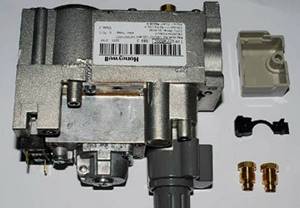
An economy mode function has been added, to enter which the ignition knob must be turned all the way.
Conord boilers are also divided into single-circuit and double-circuit.
The former are intended for connection only to the heating system, the latter can additionally perform the function of an instantaneous gas water heater.
Unlike many other boilers with two circuits, Conord does not turn off the heating while using hot water. The 2nd circuit heat exchanger is heated by the smoke pipes. But still, the amount of heat supplied to the heating circuit decreases at this time.
Navien boilers from the largest Korean manufacturer, as a rule, work properly. But it is still a technique, and sometimes it can fail. Let's look at the types of malfunctions of the Navien boiler, as well as ways to troubleshoot problems.
We’ll talk about the functions of an inverter for a heating boiler in this topic.
Do you know why double-circuit gas boilers are purchased more often than single-circuit ones? Using this link https://microklimat.pro/otopitelnoe-oborudovanie/kotly/dvuxkonturnye-gazovye-kotly-dlya-otopleniya-chastnogo-doma.html we will consider the advantages of this type of equipment, as well as installation and selection features.
What models are there?
The main types of Lemax gas boilers are:
- Floor-standing models with steel or cast iron heat exchanger.
- Wall mounted solid fuel.
The solid fuel type of equipment is represented by two models:
- Wood stoves.
- Coal boilers.
Wall-mounted boilers are produced only as double-circuit boilers: they are capable of operating at pressures up to 3 bar. In all cases, Italian automation and circulation pumps are used. Wall-mounted models include a 6-liter expansion tank. This equipment is guaranteed for 2 years. Floor-mounted modifications equipped with steel heat exchangers are also in high demand. For their manufacture, high-strength metal with a thickness of 2 mm is used.
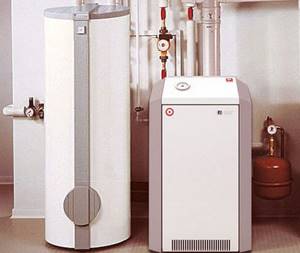
There are 5 models of steel boilers with different capacities:
- Lemax premium.
- Premium nova.
- Gazovik.
- Clever.
- Patriot.
The Premium nova model is considered the most advanced today. Thanks to automatic settings, the device can independently both start a Lemax gas boiler and set optimal operating parameters in the system. The Patriot series devices are characterized by the presence of a closed combustion chamber. They are produced exclusively as single-circuit ones, without the need for electrical power and a chimney. The presence of a 4 mm thick cast iron heat exchanger for the Leader and Wise units extends the service life by approximately 2 years. They are not afraid of various contaminants and the effects of corrosion.
Types of gas boilers
Based on the type of installation, boilers are divided into wall-mounted and floor-mounted units.
Floor-standing gas boilers are characterized by greater power, which means the ability to heat large areas of premises, and longer service lives due to the fact that the heat exchangers for such heat generators are made of steel or cast iron. Floor-standing boilers require a separate room - a furnace room.

Floor standing gas boiler
Wall-mounted boilers are more compact and lighter, which allows them to be installed on the walls of rooms. This type of heat generator is characterized by limited power, shorter service life, and increased requirements for the quality of purification of the coolant and heated water. Gas boiler malfunctions may vary depending on the type of installation.
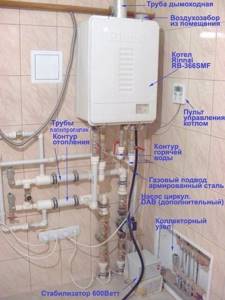
Wall-mounted gas boiler
By design, boilers are divided into single-circuit, used only for space heating, and double-circuit, intended, in addition to heating, to heat hot water.
Depending on the type of removal of combustion products, heat generators are equipped with systems with natural or forced draft. In the first case, the units are connected to a traditional chimney, which is discharged to the roof of the building, and exhaust gases are released due to natural draft. To ensure this, ventilation ducts are arranged according to certain rules. One of them is that the upper level of the chimney must be located above the roof ridge by at least 500 mm, or at the same level with it at certain distances from the ridge. The reason why the gas boiler blows out may be failure to meet these conditions. Boiler units with natural draft are equipped with open combustion chambers or atmospheric burners, the air for the burner is taken from inside the room.
In the second case, the boilers are equipped with a coaxial chimney, which is a “pipe-in-pipe” design, which is discharged outside through the wall of the room. The air necessary to support combustion comes from the outside pipe through the outer pipe, and combustion products are discharged through the inner pipe. Forced draft boilers have closed combustion chambers.

Traditional and coaxial gas removal systems
And finally, according to the method of ensuring coolant circulation, boiler units are divided into volatile and non-volatile. Volatile boilers have circulation pumps that operate from the electrical network and create pressure in the heating system. In addition, volatile boilers are equipped with sophisticated automation that controls and maintains established operating modes, including an electronic ignition system. Non-volatile heat generators do not require connection to electrical networks, and the movement of the coolant occurs due to natural pressure drops as a result of its heating. Non-volatile boilers can be ignited using a piezoelectric element by pressing a button.
The pilot light goes out when the main burners are turned on at full power.
A Siberia boiler was installed to heat the house. Now we have built a bathhouse and want to use it to make an additional circuit for heating it. Will this project succeed? I don’t want to connect the bathhouse to the main circuit, since it will require a significant reconstruction of all the pipes in the house. Residential building size sq. To it I add a bathhouse with an attic with a total area of 70 square meters.
Your unit is not capable of supporting such an area. A more powerful device is required. With open and closed combustion chamber. Methods of repair and service, adjustment of operating parameters. Maintenance recommendations. Read more Gas heating boilers Vaillant Models: floor-standing Atmovit exclusiv, wall-mounted condensing Ecotec plus.
Service, maintenance, settings of functional components. Hydraulic diagrams. Recommendations for repair, maintenance and service. Elimination of errors and malfunctions. Setting and adjustment methods. Repairs and adjustments. Installation, assembly and connection. Settings of operating modes and additional equipment. Condensing Smart Condens.
Floor standing Sigma, Kobold. Solid fuel Elegant, Vulkan. Malfunctions and error codes. Description and characteristics. Read more. Adjustment of gas automatic equipment Eurosit Replacement of thermocouple and maintenance of pilot burner. Double-circuit, turbocharged. Recommendations for eliminating errors and malfunctions.
The gas boiler goes out, what to do and how to fix it
If you have a turbine boiler and the flame does not ignite in it, it is worth listening to how it works. If sounds are heard stronger than usual or vice versa, silence - the problem is most likely in the built-in fan, which will have to be repaired or bought a new one.

There are usually 3 options when the boiler does not work:
- The device is completely turned off;
- The device is turned on, the display is on and the indicator is on, but the flame does not ignite;
- The flame ignites but quickly goes out.
First you need to check whether power is supplied to the convector. The reason for its absence may be not only a power outage, but also the operation of a machine on the distribution panel.
If the voltage is OK, you can begin repairs. To do this, unscrew the front panel of the boiler with a screwdriver and remove it or fold it back. Then find the fuse box and check each of them. If a burnt-out one is found, it must be replaced with the same rating. If after these steps the unit starts working, great, but if not, you will have to call a specialist.
If any error is displayed on the convector display, you can read what it means in the technical data sheet of the device.
Some problems that cause the device to turn off can be resolved yourself:
- A clogged sump can be cleaned by first turning off the taps of the device;
- Correct the circulation pump by unscrewing the screw in the center of the pump and releasing the air;
- Add air if the pressure in the tank is too low;
- Repair existing leaks and add water to the system.
This is how you can try to resume the operation of a gas heating boiler of various brands with your own hands, for example, AOGV, Dani, Weber, Aton, AGV.
How to deal with problems
If the boiler goes out and does not light up again, check the quality of ventilation in the room. This is a common cause of problems for atmospheric models “Proterm”, “Navien”, “Ariston”, “Bosch” with an open combustion chamber, because they take combustion air from the room.
- Organize high-quality ventilation in the room;
- Install ventilation valves on sealed window packages;
- Open the window in the boiler room for air flow.
Check the presence of draft in the boiler chamber. To do this, light a match and bring it to the control window or chimney outlet. If there is draft, the flame will deviate to the side. If not present, it will burn evenly. In the latter case, a chimney inspection is required.
Problems with the chimney part
This is excess, deficiency or backdraft. All this leads to the fading of the wick and automatic shutdown of the equipment.
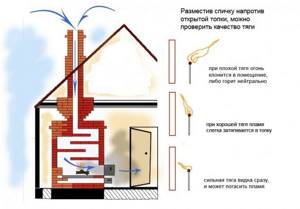
Backdraft or blowing out occurs due to weather conditions: strong winds, pressure changes lead to the burner extinguishing. During installation, take into account the requirements for the height of the chimney:
- The height of the pipe on a flat roof is at least 50 cm;
- With a distance from the roof ridge of 1.5 meters - from 50 cm above the ridge;
- At a distance of 1.5–3 meters - level with the ridge.
Compliance with these parameters will help to avoid blowing and backdraft.
Excess air flow occurs with a powerful kitchen hood or ventilation. The solution is to turn off the hood while the boiler is operating.
Lack or absence of traction provokes:
- Blockages. Occurs in stationary chimneys. Clear the mine of leaves, debris, and construction debris. Fixed and coaxial pipes can become covered with ice in winter. Along with combustion products, hot steam escapes into the street, condensation forms, which freezes on surfaces. Insulate the chimney.
- Damage, burnout of the pipe. Only replacing the chimney will help.
Line pressure drop
Does the dual-circuit device “AOGV”, “Beretta” or “Vailant” turn off and not turn on? This is possible when the fuel supply is unstable. For the same reason, the burner does not light the first time. First of all, check:
- Pipes and joints for gas leaks. To do this, lubricate them with soap foam. If bubbles appear, there is a leak. Then turn off the valves, open the window and call the gas workers.
- Counter. If there is a breakdown, the meter readings do not change; noise and crackling are heard. You can’t fix the problem yourself—you need a specialist.
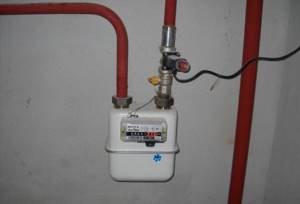
If everything is fine, wait until the gas supply is restored.
Does your equipment not start after a long shutdown? It may be worth using antifreeze as a coolant. It does not freeze when the temperature drops and allows you to safely start the system after a long period of inactivity.
Fan fault
All boilers with a closed combustion chamber - such as Buderus, Wolf, Danko, Lemax - are equipped with fans. They forcibly discharge combustion products into the street. If you hear strong noises when the blades rotate or do not hear operating sounds at all, carry out diagnostics and replace the element if it breaks.

Other faults
To find other problems, it will be useful to know the structure of the boiler you are going to repair. “Aton”, “Siberia”, “Buderus”, “Ferolli” or another brand may have their own characteristics. But the following sensors and components often break down:
- Circulation pump. If it fails, the boiler may make noise and the flame in the burner goes out. In such cases, the equipment will not work for heating and hot water supply. The only solution is to replace the pump.
- Igniter. Incorrect pressure adjustment results in flame failure. The protection is triggered and the operation stops. Set the correct fuel supply.
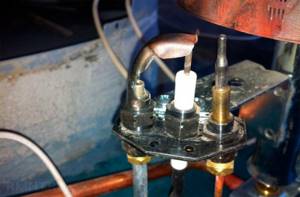
- Burner. The appliance has switched off and will not re-ignite. Check the burner nozzles for blockages. Clean them from soot and dust. Also clean the sensor photocell and try ignition again.
Diagnostics and replacement are also carried out in case of breakdown of the thermocouple, pressure and draft sensors.
Does the device not start after turning off? Check the remote control, replace the batteries. Examine the display. If it does not work, diagnose the controller.
Heating equipment that is additionally connected to the network suffers from power surges. If the values are lower or higher than the nominal value, the unit will not work. It is recommended to connect a voltage stabilizer.

It is important to understand that a boiler emergency stop can happen for a variety of reasons. It's good if a code appears on the display. For example, the display of the Proterm model may display error A6. This means that the temperature in the room has dropped and you need to connect an additional heater. So, thanks to symbolic codes, it is easier for the user to detect the problem. In other cases, you will have to check all boiler systems.
It is always easier to prevent a breakdown than to repair it. Therefore, monitor the operation of the boiler and carry out maintenance once a year.
What is a bimetallic plate
An element that has the property of deforming (bending) in one direction under the influence of elevated temperature is called a bimetallic plate. From the name you can guess that the plate contains two metals. Each of them has its own coefficient of thermal expansion. As a result, when such a plate is heated, one component expands by a certain amount, and the second by another.
This leads to a bend, the shape of which depends on the difference in temperature coefficients. The rate of deformation is directly proportional to the change in temperature. When the plate cools, it returns to its original position. The plate is a monolithic compound and can work indefinitely.
Review of manufacturers
Gas services, as well as experts in this field, recommend using boilers from the company.
The units are presented in several versions and differ in functional features. Boilers are produced only of floor type. The main difference from other analogues is the affordable price and the lack of electricity required for operation.
Keber boilers are also popular; they are equipped with an automatic safety and regulation system, which ensures precise gas supply and temperature stabilization.
Gas boilers of the AOGV series are quite in demand and are used to heat rooms that have a water heating system with natural or artificial circulation.
(Termotechnik) presents a large selection of boilers and offers floor-mounted, parapet-type, gas and solid fuel units. Many years of experience ensures excellent quality and guarantees product reliability and long service life.
Eliminating problems associated with blowing out the boiler requires special care and responsibility. It is necessary to check all components of the boiler to determine and eliminate the cause of the malfunction. If the recommendations presented do not bring results, it is worth calling the gas service specialists. Remember that quickly getting rid of problems will prevent additional breakdowns and protect not only the entire system, but also the residents of the house.
Watch the video in which a specialist examines one of the most common reasons: why a gas boiler goes out in the wind, what needs to be done, what work needs to be done to improve draft in the boiler:
Gas boilers are the most economical type of heat generators, easy to install and subsequently operate, used in autonomous heating systems. However, like any engineering equipment, gas boilers can sometimes fail, and the most common type of failure is self-extinguishing burner. To understand why a gas boiler goes out or find out the cause of other problems, you need to know about the types of boilers and the principles of their operation.
Why do you need gas automation?
Old-style boilers were manufactured in accordance with the gas parameters and heating system features that were in use several decades ago. These are, for example, models KChM, AOGV. At the same time, their durability allows them to be used for many years to come. But the problem with automation is that quite often it breaks down. In such a situation, there are three options:
- diagnose existing automation and replace the necessary parts;
- equip a reliable and high-quality unit with a modern automatic system;
- buy a new boiler.
The difference, of course, is in the price of the issue, the effort and time of the owner.
Let's consider the cheapest option - troubleshooting gas automation on an old boiler. However, first, let’s figure out why an automatic system is provided in the coolant in general.
Gas automation allows you to regulate and maintain the required level of coolant temperature, and also serves to automatically stop the gas supply in an emergency situation. Installing automation on an old gas boiler will allow you to be sure that if the burner flame goes out, then after a short time the system will work to stop the gas supply without your participation.
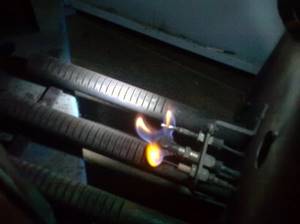
If you want to change the automation, keep in mind that domestic manufacturers produce models that are suitable for almost any old coolant. Imported automation cannot be installed on everything. In addition, when installing foreign automation on old-style gas boilers, not all of its functions may work - the design features of the boiler will not allow it.
Gas boiler Conord technical characteristics and features
The thickness of the steel sheets used to make the Conord boiler firebox is 3 mm. The material has a fire-resistant powder coating, thanks to which the service life of the boiler, as the manufacturer assures, is 15 years.
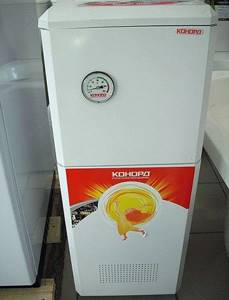
The warranty is valid for 3 years.
The efficiency of boilers of this brand is 90%.
Such a high indicator was achieved due to the installation of turbulators in smoke pipes.
The connections to the pipelines are located on the rear panel of the heat generator.
Their diameters are 50 mm or 2 inches (heating circuit connection) and 15 mm or ½ inch (for the DHW line).
The lowest-power model provides heat generation of 8 kW. The oldest representative of the line has a power of 30 kW. Intermediate values: 10, 12, 16, 20 and 25 kW.
The diameter of the chimney depends on the power of the device. For boilers with a heat output of up to 12 kW inclusive, it is 115 mm, for more powerful ones - 150 mm.
Heat generators of this brand have built-in expansion tanks with a volume of 8.5 liters. The maximum permissible coolant pressure is 6 atm.
An important feature of Conord boilers is the ability to operate at a gas pressure in the main line of only 0.6 kPa (usually the pressure in the distribution gas pipeline is maintained at 1.3 kPa)
Why doesn't the boiler start?
Often problems are shown as an error code on the display. All modern models Vaillant (“Valiant”), Baxi (“Baxi”), Ferroli (“Ferroli”) are equipped with a self-diagnosis system. Each brand has its own codes and their meanings. If the display does not show symbols, then you need to look for the cause of the problem yourself.
Problems with wall and floor units can be caused by external and internal factors.
External ones include:
- Insufficient gas pressure in the main;
- Chimney problems;
- Power surges in the network;
- Draft, low temperature in the room/boiler room.
Internal factors include breakdowns of electronics - sensors, wiring, as well as individual components - pump, heat exchanger.
The boiler blows out in a strong wind, what to do in this case
Mechanical heating boilers can go out due to being blown by strong winds. Any atmospheric phenomena - rain, high humidity, low atmospheric pressure, wind can affect draft, causing its excess or deficiency, and also cause reverse draft. Result: the boiler went out. What to do in this case?
The solution to the problem is as follows:
- You can install a special mushroom-umbrella on the edge of the pipe, which will protect the chimney from unwanted influences;
- Or you can increase the pipe itself if its length is not enough.
By the way, this is not the only problem that can arise with the chimney. In addition to blowing smoke, ice may form on the pipe. The reason for this phenomenon is condensation.
The fact is that moisture tends to accumulate and freeze over time, and then become so thick that it simply blocks the access to oxygen and the flame goes out and the boiler turns off.
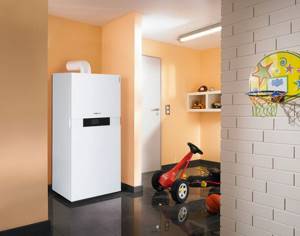
However, it happens that it is very difficult to knock off ice build-ups and then you have to defrost them. You can purchase a disposable burner with a small can. To melt the ice, you need to light the burner and insert it into the cleaning hatch. When the pipe warms up, the boiler can be put into operation.
Excursions on models and brands
The indicated reasons may apply to boilers of different modifications and brands. Below are some examples of specific models.
First: Why does the AOGV 2321 gas boiler go out? As a rule, the wick goes out with a characteristic metallic click. Most often the reason lies in poor traction.
Second. The Zhukovsky boiler goes out. This unit has old automation. The problem lies in the oxidation of the contacts on the EMC and the burnt-out thermocouple. The valve is thoroughly cleaned in the connecting areas of the copper tubes. It is better to replace the thermocouple.
Third: If the Zhitomir-3 boiler goes out. The most common problem is that it only works briefly after startup.
The reason for this was the thermal breaker, which was poorly screwed into the EMC. There was weak contact between them by default. During the season of work it got even worse. After tightening it a little, the boiler stopped turning off.
Boiler bimetallic plate
Natural gas heating systems are high-risk devices and therefore include various condition monitoring sensors. So, the main safety element is the traction sensor. It determines the correct direction of exit of combustion products, that is, from the combustion chamber towards the chimney. This prevents carbon monoxide from entering the room and poisoning people.
The main component of the draft sensor is a bimetallic plate for a gas boiler. Its operating principle is similar to any bimetal, and the dimensions and parameters of the material are calculated in such a way that exceeding the temperature of 75 degrees in the channel leads to deformation of the plate and operation of the gas valve.
Signs that the igniter (wick) is not working properly and why does it go out?
In columns with piezo ignition, the igniter must burn constantly, because when the hot water tap opens, it must ignite the main burner. The extinguishing of the igniter disconnects the column from the gas supply so that gas does not accumulate inside the device.
The pilot light may go out if:
- It is clogged with debris or dust.
- A flow of air acted on him from outside.
- The thermocouple has burnt out or worn out.
- There is no draft in the chimney.
- The traction sensor has failed.
- The solenoid valve is broken.
- No air access.
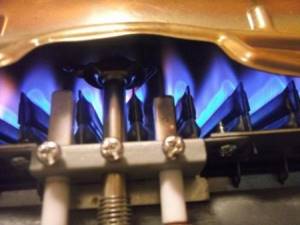
The most common cause of igniter extinguishing is a faulty thermocouple. Its main function is to block gas access to the column if the device is operating unstable. As soon as the pilot light goes out, the thermocouple detects the lack of heat and gives a signal to turn off the gas. However, if the thermocouple itself is damaged, it causes the wick to fade.
An equally common situation is when dust or some kind of debris gets into the igniter nozzles. Their diameter is very small, so even slight contamination can prevent the igniter from burning, resulting in the thermocouple not heating up enough.
The color of its flame indicates that there are problems with the igniter and it may go out at any moment. A normally functioning wick will have a flame that is 90% blue and may include some red flecks, and the tip may be yellow. If the pilot flame is predominantly yellow or orange, the wick is not working properly and the thermocouple will not heat up enough, causing the burner to go out.

